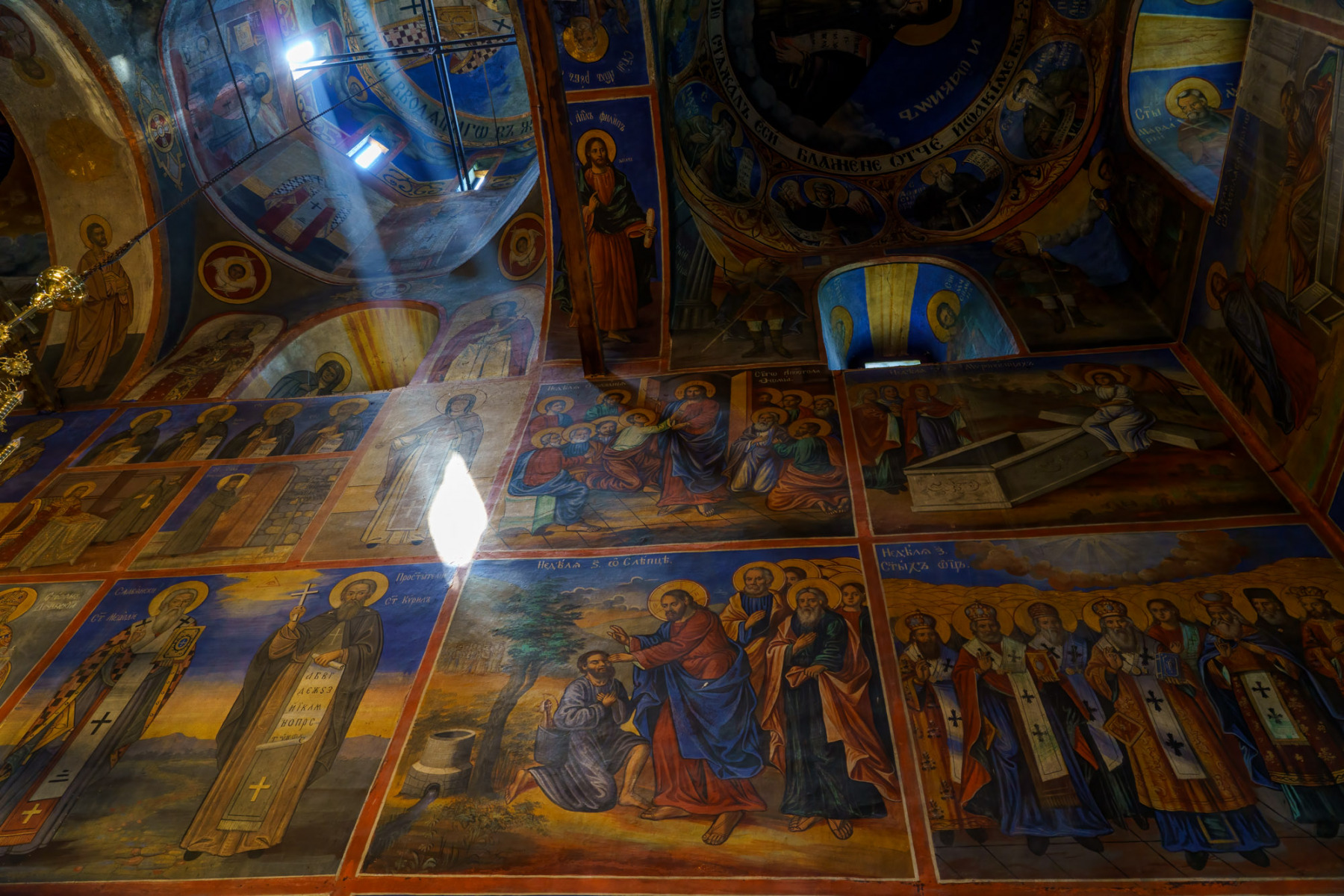My Balkan Odyssey: From Leaky Minibuses to Beekeeping Adventures
Sofia greeted us with a warm embrace…and a rather damp one, thanks to a leaky minibus roof. But hey, a little rain couldn’t dampen my spirits for this Balkan adventure! History, frescoes, and food – my travel trifecta – awaited.
Day 1: A Foodie’s First Impressions
After drying off at the Sofia Palace, we dove headfirst into the local cuisine. Vegetarians, rejoice! There were plenty of options, and cheese lovers would be in paradise as everything seemed to come with it.
Braving the on-going rain I went exploring the charming streets and stumbled upon the Church of St. Nicholas the Miracle-Maker. The frescoes inside were breath-taking, a silent testament to artistic mastery (photography wasn’t allowed inside, but trust me, it was incredible).
Day 2: A Journey Through Time
The next day, we stepped back in time at the Boyana Church, a UNESCO World Heritage Site. The detailed frescoes were mesmerizing, though frustratingly off-limits for photos. Further south, the magnificent Rila Monastery awaited. Nestled amidst mountains, this black and white striped wonder boasted unique frescoes inside (you guessed it, no photography) although I was able to capture those adorning the exterior.
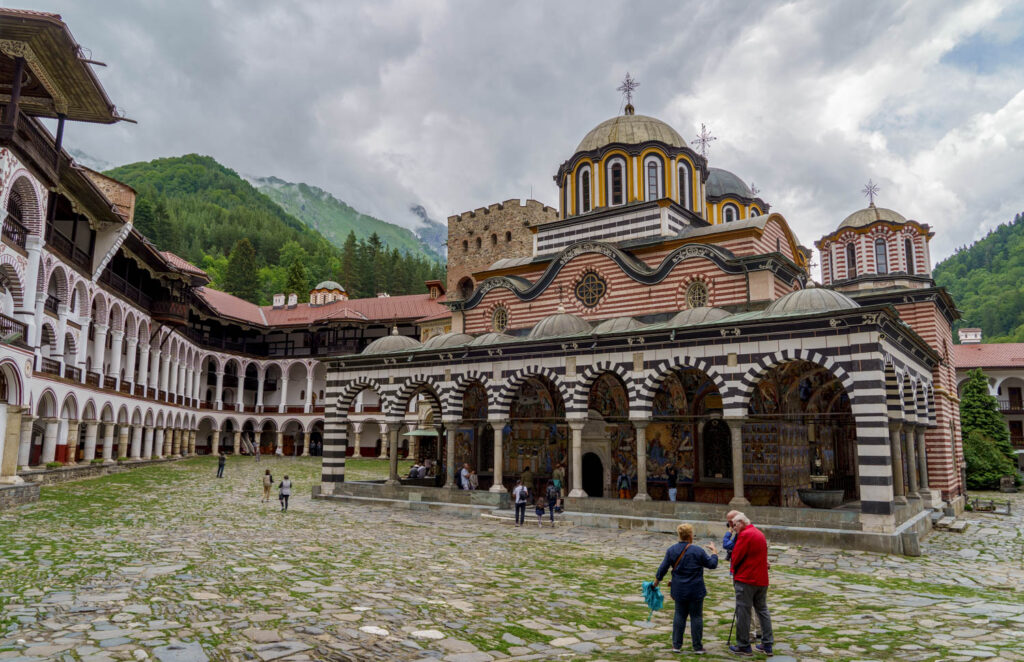
Our final stop was Melnik, Bulgaria’s tiniest town. Nestled on a hill, its charming streets were lined with historical buildings. Be prepared for some legwork – the hotel sat atop a climb that would test even the most seasoned hiker!
Day 3: Crossing the Border to North Macedonia
A smooth border crossing into North Macedonia led us to Strumica, a lively city perfect for a delicious lunch. Next, we delved into history at Stobi, one of North Macedonia’s largest archaeological sites, boasting well-preserved mosaics and ruins from the Roman era.
Day 4: More Roman Ruins and Local Delights
After a simple breakfast at the winery where we spent the night, we headed south to Bitola, another treasure trove of Roman ruins. Exploring Heraclea, a fascinating site with captivating mosaics, felt like stepping back in time. In the evening, Bitola’s vibrant pedestrian area buzzed with life. We indulged in a traditional Macedonian feast – the incredibly low bill was a delightful surprise!
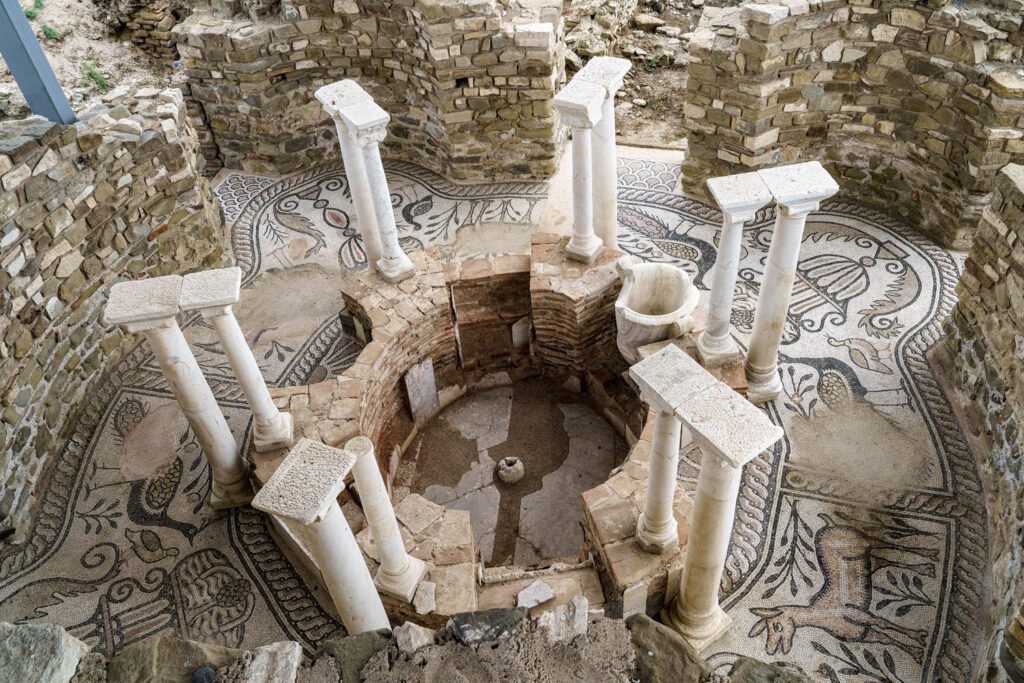
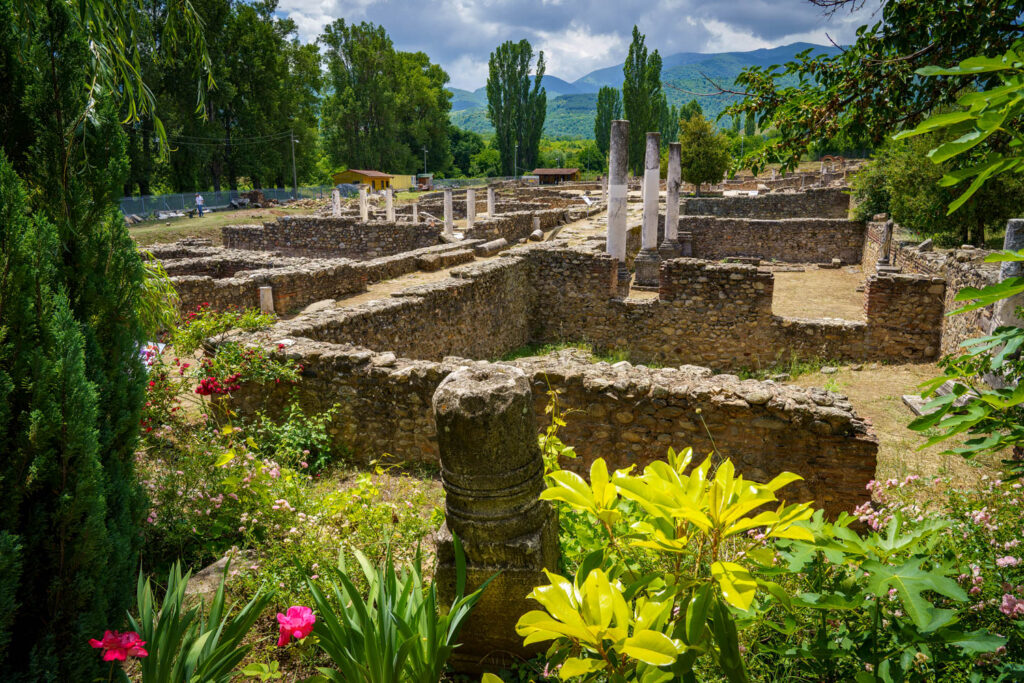
Day 5: Mountain Majesty and Beekeeping Adventures
A scenic drive took us to Mount Palaster National Park for a refreshing walk amidst endangered Molika pines. Learning about local beekeeping traditions and witnessing the fascinating process of honey production was a highlight. After a delicious beekeeper-hosted lunch, we reached Ohrid, a charming yet touristy town. Dinner, however, proved to be a bit of a let down – sometimes, the best views aren’t on the plate.
Day 6: Unveiling Ohrid’s Beauty
Ohrid’s old town unveiled its beauty the next day. We explored the Roman amphitheater and the iconic St. Clement Church. A scenic boat ride across the lake revealed the Bay of Bones, a reconstruction of a prehistoric settlement discovered nearby.
In the evening, we drove out of town and on to a small village nestled in the mountains, where a local family treated us to a delightful home-cooked meal. As usual, it was salads and cheese to start, followed by some baked rice with meat and potatoes. The meal ended with a homemade strawberry sponge, and all accompanied by homemade lemon and nettle cordial. The hospitality and delicious food were heart-warming.
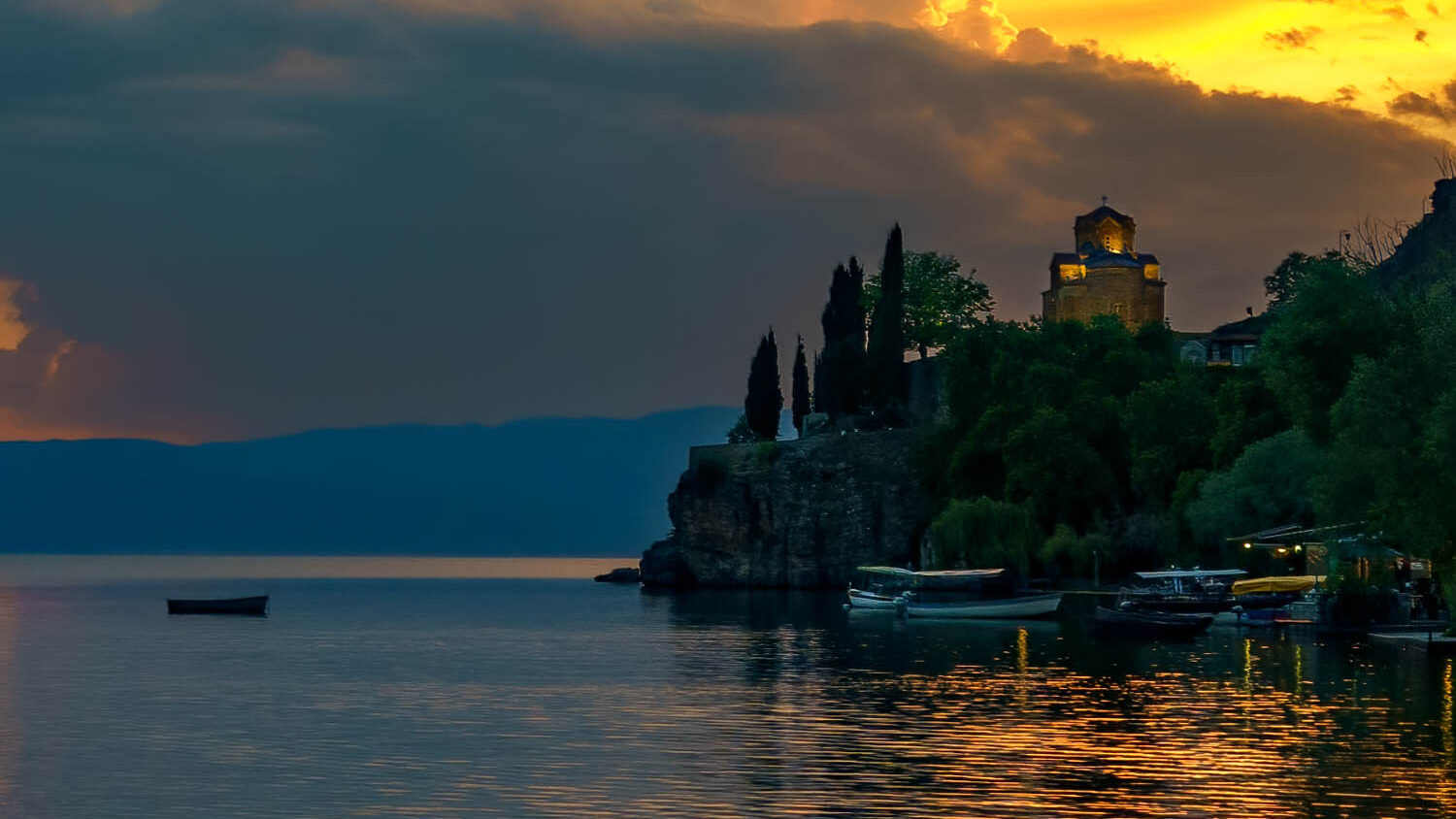
Day 7: Mosques, Mountains, and Monastery Marvels
Tetovo stunned with its vibrantly colored Painted Mosque, unlike any I’d ever seen before. The sides of the building seem to have faux-panels painted on them and the interior richly decorated in yellows and reds.
Refueling with a delicious lunch on a terrace overlooking the Polog Valley in the charming village of Varvara was pure bliss. Our journey continued to Prizren, Kosovo, where a quick exploration of the old town preceded dinner.
Day 8: Gračanica Monastery and Skopje’s Grandeur
As we headed back to the Kosovo/North Macedonia border, Gračanica Monastery offered a glimpse into stunning frescoes (photography prohibited – the reasons remained intriguing). Back in North Macedonia, Skopje awaited. Our hotel sat right next to the old bazaar, a maze of cobbled streets. The newer part of the city, rebuilt after a devastating earthquake in 1963, boasted impressive monuments, huge in scale, looking like titans frozen in place and a stark contrast to the old town.
Day 9: Farewell to the Balkans
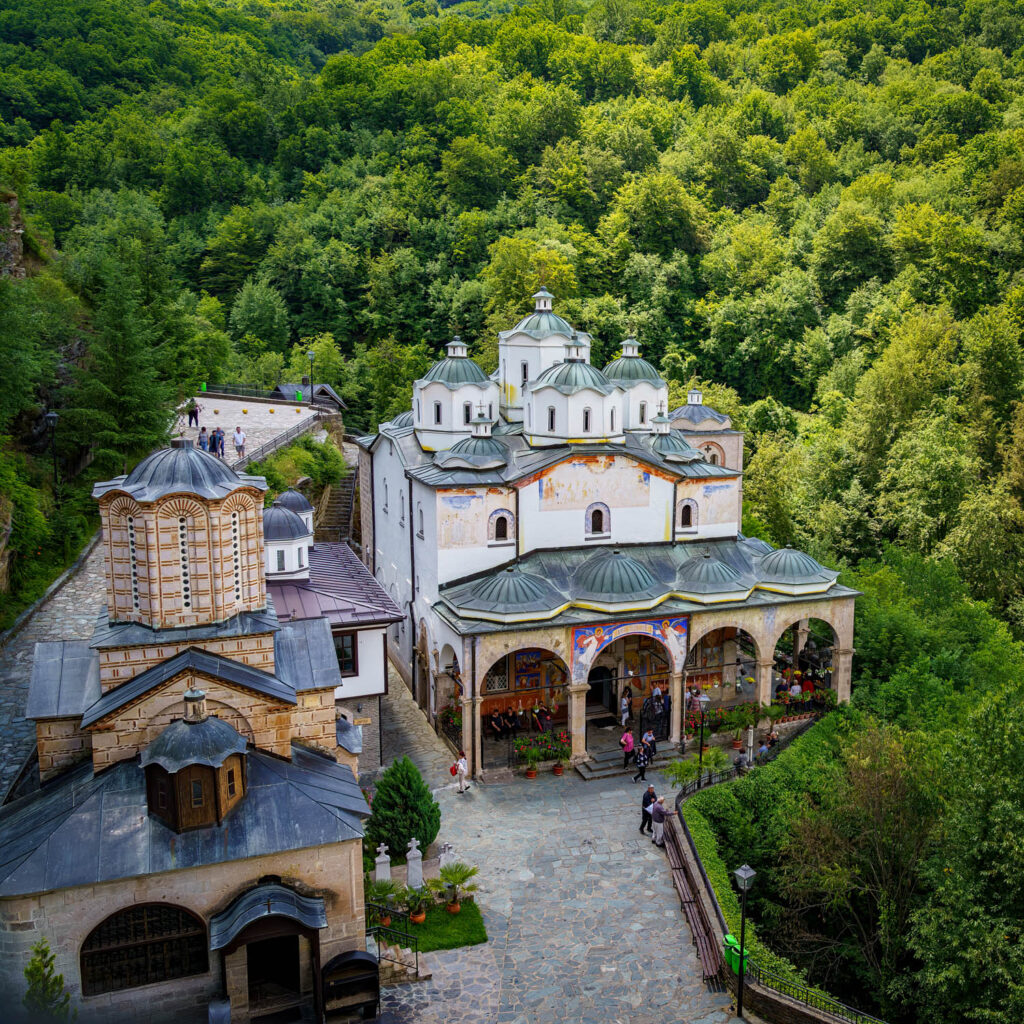
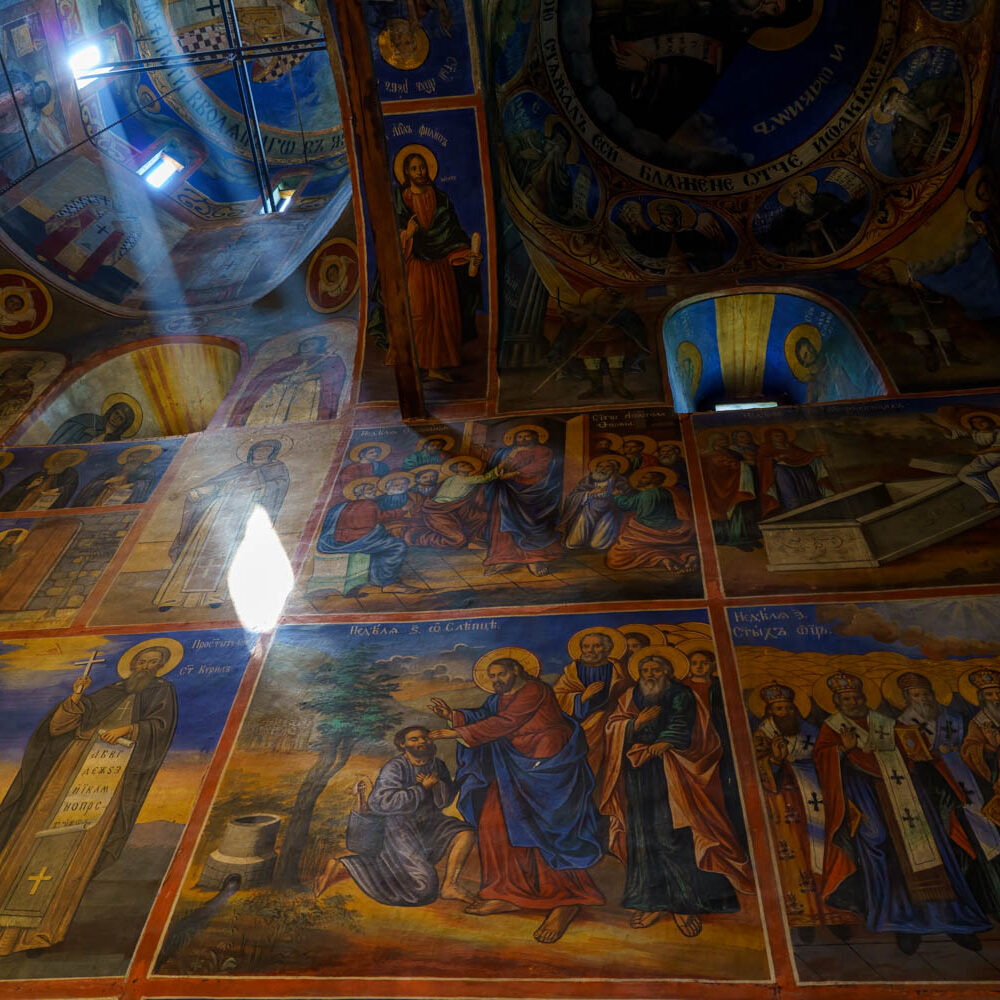
A final stop at Osogovo Monastery near Kriva Planka allowed me to capture the beauty of its relatively new frescoes bathed in sunlight. Then back in Sofia, a walking tour took us past the Alexander Nevsky Cathedral, Roman ruins, and grand government buildings. This was interrupted at one point by a fascist march taking place to object to Gay pride (which was also later that day). After waiting for the protestors to move off – thankfully there weren’t a lot of them – we continued our wanderings in peace.
Our Balkan adventure concluded with a farewell dinner, filled with memories of cultural encounters and delicious discoveries. As we boarded the plane back home, I knew this wouldn’t be my last Balkan adventure.

